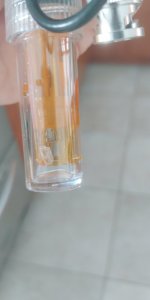I have been on the fence on monitoring ORP, but bought a Seeedstudio ORP sensor kit from Mouser. Was cheap enough to take a chance and see how it goes.
My plan is connect it to an ESP8266 which will read the output. This kit generates an analog signal output, so you need to read it as a voltage with the ADC input.
I don't plan to calibrate it, will just see how the ORP readings compare to my FC levels.
No controlling based on ORP planned either. My goal is to get notifications if the ORP readings indicate an issue. The limits for the notifications will be based on what I should get based on my experiments with it.
And because I'm lazy, I'm going to try to drop the sensor in pool, hiding the ESP in a case nearby.
Package is on its way, due next week, so I'll see if my mad scientist plan works.
Randy
My plan is connect it to an ESP8266 which will read the output. This kit generates an analog signal output, so you need to read it as a voltage with the ADC input.
I don't plan to calibrate it, will just see how the ORP readings compare to my FC levels.
No controlling based on ORP planned either. My goal is to get notifications if the ORP readings indicate an issue. The limits for the notifications will be based on what I should get based on my experiments with it.
And because I'm lazy, I'm going to try to drop the sensor in pool, hiding the ESP in a case nearby.
Package is on its way, due next week, so I'll see if my mad scientist plan works.
Randy


